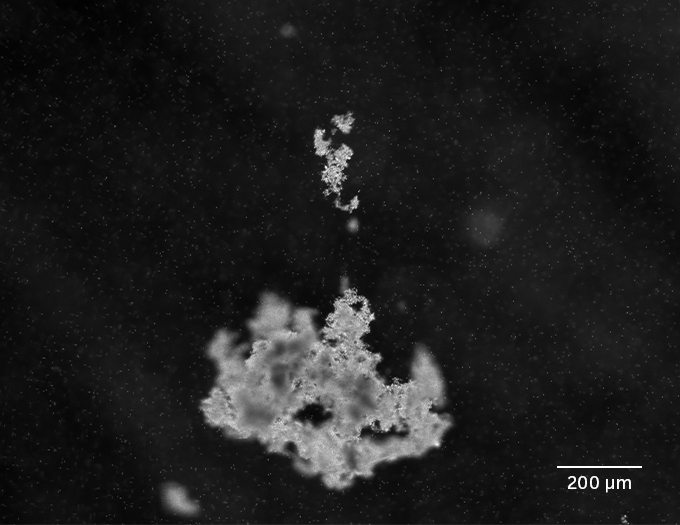This post was originally published on this site
WASHINGTON — Tiny, sinking flakes of detritus in the ocean fall more slowly thanks to the goop that surrounds each flake, new observations reveal.
The invisible mucus makes “comet tails” that surround each flake, physicist Rahul Chajwa of Stanford University reported November 19 at the American Physical Society’s Division of Fluid Dynamics meeting. Those mucus tails slow the speed at which the flakes fall. That could affect the rate at which carbon gets sequestered deep in the oceans, making the physics of this sticky goo important for understanding Earth’s climate.
Although scientists knew the goo was a component of the “marine snow” that falls in the ocean, they hadn’t previously measured its impact on sinking speed.
Marine snow is made of dead and living phytoplankton, decaying organic matter, feces, bacteria and other aquatic sundries, all wrapped up in mucus that’s produced by the organisms. Like the gunk known for clogging airways during respiratory virus season, the mucus is what’s called a viscoelastic fluid (SN: 3/17/16). That’s something that flows like a liquid but exhibits elastic behavior as well, springing back after being stretched.
This underwater blizzard is not easy to study. When observed in the ocean, the particles sink swiftly out of view. In the laboratory, the particles can be viewed for longer periods, but the trek ashore degrades the delicate marine snow and kills the living organisms within it.
So Chajwa and colleagues built a physics lab at sea. Aboard a research vessel in the Gulf of Maine, the team collected marine snow particles in traps 80 meters below the water’s surface. Then they loaded their catch into a device onboard, designed to observe the particles falling.
Nicknamed “the gravity machine,” it’s a fluid-filled wheel that rotates in order to keep an individual flake in view of a camera. It’s a bit like a hamster wheel for falling debris. As the flake sinks, the wheel turns so as to move the snow in the opposite direction, allowing the snowfall to be observed indefinitely. The gravity machine was itself mounted on a gimbal designed to stave off sloshing from the rocking of the ship.
“It’s a very nice compromise between the real marine snow that you get in the ocean versus what you can do practically in the lab,” says biophysicist Anupam Sengupta of the University of Luxembourg, who was not involved with the research.
To observe how the fluid flowed around the particles, the researchers added tiny beads within the fluid in the gravity machine. That revealed the rate of fluid flow around the particles. The speed of fluid flow was slowed in a comet tail–shaped region around the particle, revealing the invisible mucus that sinks along with the particle.


The particles sank at speeds up to 200 meters per day. The mucus played a big role in sinking speed. “The more the mucus, the slower the particles sink,” Chajwa says. On average, the mucus causes the marine snow particles to linger twice as long in the upper 100 meters of the ocean as they otherwise would, Chajwa and colleagues determined.
If it falls deep enough, marine snow can sequester carbon away from the atmosphere. That’s because living phytoplankton, like plants, take in carbon dioxide and release oxygen. When phytoplankton form marine snow, they take that carbon along with them as they sink. If a flake reaches the ocean floor, it can settle into a scum at the bottom that caches that carbon over long time periods. The faster the particles sink, the more likely they are to make it to the abyss before being eaten by critters (SN: 6/23/22).
Knowing how fast the particles sink is important for calculating the ocean’s impact on Earth’s climate, and how that might change as the climate warms, the researchers say. The oceans are major players in the planet’s carbon cycle (SN: 12/2/21), and scientists estimate that oceans have taken up roughly 30 percent of the carbon dioxide released by humans since industrialization. Chajwa and colleagues hope that their results can be used to refine climate models, which currently do not take the mucus into account.
So this mucus is nothing to sneeze at. “We’re talking about microscopic physics,” says Stanford physicist Manu Prakash, a coauthor of the work, which is also reported in a paper submitted October 3 at arXiv.org. “But multiply that by the volume of the ocean … that’s what gives you the scale of the problem.”
